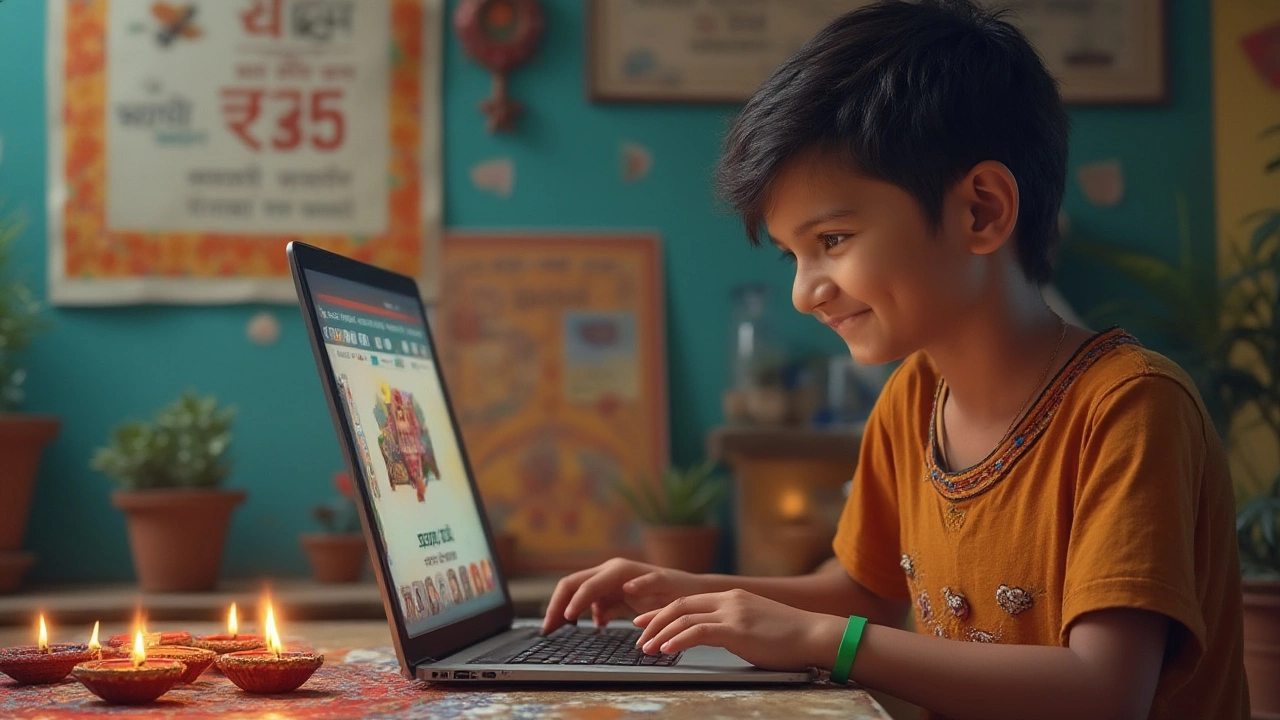A few years ago, a Sydney teenager launched a $100K online store with only free tools, hand-me-downs, and a healthy dose of stubbornness. The myth that starting a business always takes a fat wallet? It’s crumbling. Every day, more people launch online businesses from living rooms, playground benches, and kitchen benches, without burning through savings or begging the bank. You don’t need a trust fund. You need WiFi, resourcefulness, a smartphone or laptop, and a willingness to put in honest work. Let’s unpack how unfamiliar faces are quietly becoming digital bosses with a grand total of zero dollars down.
Finding the Right Idea Without Spending a Cent
The first question that stumps most would-be online entrepreneurs: What can I sell when my startup fund is the size of a shoelace? Forget inventing the next Facebook. With no money down, you want ideas that dodge heavy startup costs and let you tap into free or near-free resources.
Dropshipping is a classic. In Australia, platforms like Shopify or WooCommerce pair with suppliers who ship directly to your customer, meaning you spend nothing on inventory upfront. Recent data shows dropshipping made up a third of Shopify’s 2024 sales for first-time sellers—that’s a staggering stat. But you’re not limited to products. Digital services are still booming. Freelancing on sites like Upwork, Fiverr, or even Aussie-focused platforms like Airtasker let you sell your skills (writing, design, marketing, tutoring, coding, or consulting) with zero cash upfront.
Let’s talk content businesses. If you’ve got expertise (or strong opinions), blogs, YouTube channels, and podcasts can be built almost entirely with free tools. WordPress, Blogger, Anchor, and the native YouTube upload studio all let you start for free and monetize later via ads, sponsorships, or affiliate sales. In 2023, more than one in five Australians aged 18-34 earned side income online, with a big chunk coming from digital content.
Print-on-demand is quietly huge too. If you’ve got ideas for T-shirts, mugs, tote bags—all doable without touching a single product. You upload a design to sites like Redbubble or Teespring, promote your shop, and when orders roll in, the site prints and ships for you. No stock. No risk. Just imagination and hustle. Want something different? Offer online workshops or build a paid newsletter using Substack—free until you start earning.
A quick list for hungry minds:
- Dropshipping using Shopify + Oberlo or Syncee
- Freelance services on Upwork, Fiverr, Canva’s Creator program, Airtasker
- Digital products (e-books, printables, courses) on Gumroad or Etsy’s digital section
- Affiliate marketing with no upfront cash (Amazon, eBay, Aussie brands like Booktopia)
- Free blogs, YouTube, TikTok, or newsletter platforms, monetizing with ads/affiliate links
- Print on demand via Redbubble, Printful, Teespring
- Virtual event organising—webinars, online classes using Zoom’s free tier
Don’t worry if you’re not a designer or writer. AI tools like Canva (for design templates) or ChatGPT (for writing prompts) are free at the basic level and dramatically speed up startup tasks, from logos to product descriptions. Creative people, introverts, hustlers, and everyday Aussies—all of you can find a niche with no upfront cost.
Here’s a snapshot comparing popular zero-budget models in Australia for 2024:
| Type | Upfront Cost | Main Tools | Best For |
|---|---|---|---|
| Dropshipping | $0 (basic plans) | Shopify, WooCommerce, Oberlo | Product sales |
| Freelancing | $0 | Upwork, Fiverr, Airtasker | Skill-based services |
| Print on Demand | $0 | Redbubble, Printful | Designs, custom merch |
| Blog/YouTube | $0 | WordPress, YouTube, Anchor | Content creators |
| Online Course | $0 | Teachable, Substack, Zoom | Education, coaching |
No matter which idea grabs you, always check the fine print: some platforms offer free tiers but charge a bit once you scale, so start small and pay only when you’re making money.

Building Your Business With Free Tools, Resources, and Hustle
Turning an idea into an income? Here’s where it gets scrappy in the best way. Paid apps and fancy software might tempt you, especially with every guru promising a magic button, but free tools these days are honestly top notch. All you need is a roadmap, an internet connection, and a bit of time-blocking in your calendar.
Establishing a digital home base is step one. Canva’s free version will sort you out with pro-looking logos, banners, and social media graphics in minutes—even if you’re the type who draws stick figures. For a website, WordPress.com is the godfather of free. You can host your blog and even connect a custom domain (grab the .com.au later once things lift off) without coughing up a dollar. If you fancy selling, Shopify and Big Cartel both have free or trial versions, while Gumroad stays free for digital products until you rake in sales.
Social media? Your best megaphone is also free. Instagram, TikTok, LinkedIn, Facebook—these aren’t just for oversharing. They’re free billboards. Use them to build authority, show off finished projects, even launch a product with a live video or scheduled post. Consistency—and, to be honest, authenticity—win over big-budget, corporate slickness any day on these platforms. People want to see who you are, not just what you’re selling.
Let’s get practical with day-to-day tools as well. Google Workspace (sheets, docs, slides) is a free powerhouse for organizing ideas, writing sales copy, and even keeping customer data (safely, within privacy limits). For video meetings, Zoom and Google Meet give you plenty of minutes for free—just be clear with your calls, and you can host dozens of sessions before you need to worry about paid limits. For project management, Trello and Notion have free plans and keep you on track.
If you’re running an ecommerce or dropshipping gig, Oberlo and Syncee let you add products and sync up with Australian suppliers with no commitment. Want to test the waters? Some print-on-demand platforms like Redbubble have no approval process—get started instantly. For newsletters and email marketing, Mailchimp’s free plan lets you message up to 500 subscribers—plenty for test runs.
The cool part: you can stack these free tools however suits your style. Sharpen your logo in Canva. Jot down brainstorms in Google Docs. Set up a Trello board for daily tasks. When it’s time to publish your first sales post, do it in ten minutes with a Canva graphic and an Instagram caption. Linktree will let you put all your key links (store, newsletter, YouTube, whatever you’ve got cooking) into one neat profile—again, free of charge.
Smart tip: If you hit a roadblock? You’re not alone. Australian government services like business.gov.au have no-cost webinars and guides designed for digital rookies. If you want to geek out even further, YouTube is packed with free mini-courses on everything from SEO basics (shoutout to Ahrefs and Neil Patel, whose stuff is binge-worthy) to video editing tips.
If you find yourself short on original content, don’t stress. Canva and Unsplash let you use photos and templates that look pro, so you won’t need to spend a cent until your business is off the ground. Just make sure to always check licenses for commercial use if you start selling.
Watch your time, though—when you’re not putting cash down, effort is the currency. Block two hours after work, batch your content, and resist the urge to endlessly tweak your logo instead of actually launching something. Those who succeed don’t usually have the flashiest launch—they just ship, improve, and get their first sale before anyone else.

Getting That First Customer and Scaling Without Spending Big
You’ve built a service, product, or content channel using only sweat, spare time, and free tools. But having something to sell isn’t enough. You need someone to buy—it’s the only validation that matters. Nabbing your first customer, subscriber, or client with no ad budget or marketing team might feel scary, but thousands do it every week. Here are tactics with zero outlay and proven bite.
Start with your existing networks. Colleagues, mates, friends of friends, your local community Facebook group—Australia is packed with trusted micro-communities that love to support locals. Write an honest post about what you’re offering. Don’t hard sell. Just explain the value in normal language. Most early buyers don’t come from cold Google searches—they’re people you already know or who know someone you know.
Find where your niche hangs out online—and hang out too. Reddit forums, industry Facebook groups (especially Aussie-leaning ones),, and LinkedIn are all loaded with people looking for solutions. Participate in conversations, offer advice, answer questions, and drop respectful mentions of your new business only when it’s genuinely useful. For example, if you’re launching a home exercise coaching service, join Sydney fitness groups and offer a free digital checklist in exchange for an email or follow.
Leverage search and content marketing. Use a free keyword tool (like Ubersuggest) to spot what people in Australia are searching for, then write a quick blogpost or make a YouTube video using those words. This makes your offer findable when real people start Googling their problems. You don’t have to be an expert writer. Authenticity trumps polish for most online audiences today.
Never underestimate the power of free offers. First month free. Free e-book. Free mini-consultation. You give a taste, users get value, and many will happily pay for more. In fact, a 2024 survey by Roy Morgan showed nearly 66% of Millennials and Gen Z’ers prefer trying a service before buying—a free sample or discounted trial is your best friend.
When you start getting traction, collect honest feedback—even if it’s brutal. Use that feedback to tweak your product, refine your pitch, and build testimonials for social proof. Display these wins visibly: screenshot kind words, record quick customer stories (with permission), or even share behind-the-scenes process videos. People buy from real people, not faceless logos.
As you grow, don’t be tempted to throw money at ads before you see organic success. Smart solopreneurs use profits from first sales to run small, targeted experiments—which means risk stays minimal. Scale by reinvesting: maybe spend on a custom domain, or upgrade to pro versions of your favourite free tools only when the work is paying for itself. It’s step by step, not all at once.
For a confidence boost, here's a quick reminder: according to the ABS (Australian Bureau of Statistics), over 60% of new micro-businesses started in 2023 spent less than $1,000—even less when online services were involved. There’s never been a better time, or a cheaper time, to test your ideas online than right now, from wherever you are.
So, don’t sweat the lack of cash or connections. Start online business using free tools and clever tactics. Lean into your story, show up in relevant spaces, deliver real value, and keep improving based on what real customers tell you. You’ll surprise yourself by how much you can build without ever touching your bank card—and who knows, maybe your story is the next headline about the Aussie who bootstrapped an empire from a laptop in their Bondi flat.

